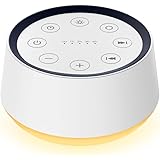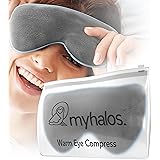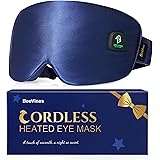Evening Yoga for Sweet Dreams: A Gentle Bedtime Flow for Deep Relaxation
Modern life frequently disrupts restful sleep. Chronic stress often compromises nightly rest. Many individuals struggle with effective unwinding before bed.
However, deep relaxation is truly attainable. The accompanying video, “25 Min Evening Yoga | Full Body Stretch – Sweet Dreams Bedtime Flow,” offers a transformative solution. This gentle evening yoga sequence specifically prepares the body and mind for profound rest.
Setting the Stage: Crafting Your Personal Sanctuary
The efficacy of a bedtime flow is significantly amplified by the environment. Consider creating a serene space. This process involves more than just selecting cozy attire.
Imagine if your surroundings actively encouraged calm. Dimming the ambient lighting is suggested. Additionally, screens should be powered down or placed out of sight. This minimizes blue light exposure and mental stimulation.
A few candles often enhance the tranquil atmosphere. The practice can be performed on a yoga mat. Alternatively, the bed itself provides a convenient surface, allowing for an immediate transition to sleep. Prioritizing comfort during this evening yoga routine is paramount.
The Science of Stillness: Why Evening Yoga Works for Sleep
Gentle evening yoga activates the parasympathetic nervous system. This physiological shift promotes rest and digestion. Conversely, daily stressors often trigger the sympathetic ‘fight or flight’ response.
Through mindful movement, cortisol levels can be lowered. This hormone is directly linked to stress and wakefulness. Muscle tension, frequently accumulated throughout the day, is systematically released. The body learns to unwind.
Deep breathing exercises, known as pranayama, are integrated. These practices enhance oxygen flow and calm the nervous system. Regular practice can significantly improve sleep architecture. This includes increased duration of deep, restorative sleep cycles.
Foundational Postures for Deep Release in Your Bedtime Flow
The video guides practitioners through specific asanas designed for deep release. These postures target common areas of tension. Each movement is intended to soothe, not stimulate.
Supine Openers: Knee-to-Chest & Hamstring Release
The practice is initiated lying supine. The shoulder blades are consciously relaxed into the floor. A few deep breaths are taken, fostering immediate presence.
Hugging one knee into the chest gently elongates the lumbar spine. This also creates a release in the hip flexors. Extending the leg upwards then targets the hamstrings. Imagine the fascia lengthening with each breath.
Conversely, aggressive stretching is avoided. The focus remains on gentle lengthening. Relaxing the jaw and facial muscles is also emphasized. This promotes overall body softness.
Lateral Decompression: Side Body Stretches
A subtle but effective side-body stretch is introduced. This posture resembles a gentle “banana-asana.” The legs are crossed at the ankles. The upper torso is then shifted towards the opposite corner of the mat.
Arms are extended overhead. The hands often grasp opposite elbows. This creates a beautiful decompression along the lateral aspect of the body. Such stretches can alleviate side rib and intercostal muscle tightness.
Despite its simplicity, this stretch provides significant release. It broadens the breath capacity. This contributes to a deeper state of relaxation.
Hip & Spine Mobility: Butterfly Pose & Forward Folds
Transitioning to a seated position, butterfly pose is assumed. The soles of the feet are brought together. The knees are allowed to fall open wide. Rooting down through the sit bones ensures spinal integrity.
A tall spine is established on the inhale. Then, a gentle fold forward occurs from the hips on the exhale. Elbows may be used to subtly deepen the hip stretch. This pose targets the adductor muscles and inner thighs.
While some find deep hip opening challenging, patience is key. The emphasis remains on relaxing the upper torso. This allows gravity to assist the release.
Restorative Backbends: Melting Heart & Sphinx
Coming onto all fours, melting heart pose (Anahatasana) is explored. The hands walk forward. The forearms and forehead descend towards the floor. This opens the chest and shoulders.
This posture offers a gentle upper back extension. It can alleviate tightness from prolonged sitting. Moving into Sphinx pose, the forearms are pressed down. The heart space is opened.
Neck circles are performed. This releases any cervical spine tension. Deeper engagement can be achieved by lifting onto the palms. However, the gentle opening of the heart remains paramount for this sweet dreams bedtime flow.
Spinal Nurturing: Bridge Pose & Gentle Twists
Lying supine again, bridge pose is practiced twice. The hips are lifted on an inhale. The glutes and inner thighs are gently engaged. This strengthens the posterior chain.
Conversely, the focus is on a slow, controlled descent on the exhale. This movement enhances spinal articulation. It also builds core stability. Supine twists follow, targeting the lower back.
One knee is hugged into the chest. It is then guided across the body with the opposite arm. Both arms extend out wide. This provides a deep rotational stretch for the spine. Such twists can significantly decompress the vertebral column. They are particularly beneficial for lumbar discomfort.
Self-Myofascial Release: The Power of Touch
The practice incorporates self-massage. This technique is often overlooked in traditional yoga. It offers powerful myofascial release. Imagine the benefits of releasing adhesions within connective tissues.
Beginning with the feet, gentle pressure is applied. The arches, heels, and tops of the feet are massaged. This stimulates nerve endings. It promotes overall relaxation. This attention to distal body parts signals safety to the nervous system.
Moving upwards, the shins, calves, knees, and thighs are massaged. This enhances circulation. It also increases proprioceptive awareness. The release then extends to the shoulders, arms, and hands. Cross-body massage techniques target the traps and neck. This is highly effective for reducing upper body tension. Despite its simplicity, this self-care aspect of the evening yoga sequence is invaluable.
Embracing Savasana: The Apex of Relaxation
The practice culminates in Savasana, or corpse pose. This final resting posture is crucial. It allows for full integration of the session’s benefits. The legs extend wide, and the arms rest alongside the body.
The eyelids are gently closed. The body is allowed to settle completely. Two cleansing breaths are recommended. A deep inhale through the nose is followed by an open-mouth exhale. This signals a complete surrender to rest.
Lingering physical tension is encouraged to melt away. Feel free to remain in Savasana for an extended period. This conscious period of stillness is where true restoration occurs. It prepares the mind and body for the deep sleep facilitated by this sweet dreams bedtime flow.








